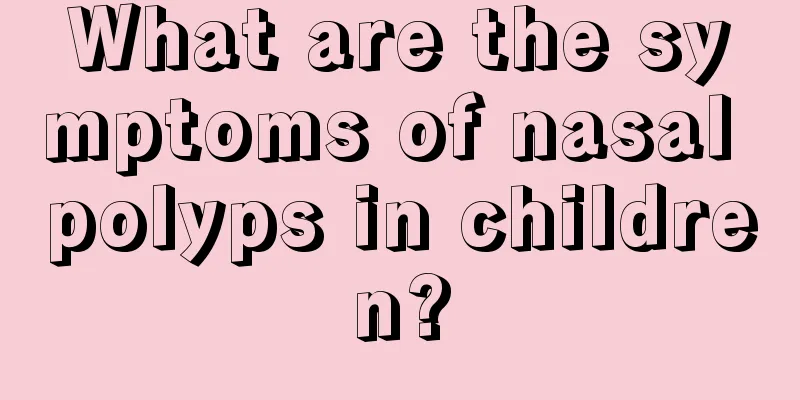Symptoms of ADHD in Little Two

|
The symptoms of ADHD in children are quite obvious. First of all, the child will show inattention, be easily distracted in class, and have dull eyes. In addition, the child will be more active and unable to control his or her own nervous reaction ability. In life, the cause of ADHD in children is related to the child's physical development. If the child lacks vitamins or suffers from lead poisoning, it will affect the reaction of the nerves, causing the child to show uncontrolled nerves. Causes of ADHD in children At present, there is no medically determined cause of ADHD in children. Based on existing cases, it is believed that it may be related to physiological, psychological and genetic factors. Physiological factors 1. Women have diseases during pregnancy or perinatal period, or have a history of heavy smoking or alcoholism. 2. Children have severe lead poisoning or fatal toxic encephalopathy, dementia and other neurological damage. 3. Children are deficient in vitamins, are allergic to certain foods, or consume too much food flavorings (artificial colors). 4. The fetus suffers mild brain damage before, during and after birth. Psychological factors 1. Poor social environment or family conditions, such as family breakdown, economic poverty, crowded housing, and parents with bad personalities. 2. Parents have a history of alcoholism, drug abuse, or mental illness. Genetic factors 1. The child’s father and brothers are hyperactive and inattentive. 2. There are many children’s relatives who suffer from alcoholism, antisocial personality disorder, and hysteria. Clinical manifestations of ADHD in children Infancy 1. Easily excited, prone to crying, poor sleep, and difficult to feed. 2. It is difficult to develop the habit of regular urination and defecation. 3. Although the activity increases, the movements are extremely uncoordinated. 4. Lack of concentration or short concentration time. School age 1. Inability to concentrate Children with ADHD have short attention spans and are easily distracted by external factors. The children are unable to complete a task from beginning to end, and find it difficult to follow instructions and requirements. They often move on to another task without finishing one task. 2. Too many behaviors and activities Children with this disease often move their hands and feet constantly, cannot stay still, cannot sit still, and like to climb around without realizing the danger. Easy to provoke others, like to quarrel and fight with others. Even when sitting on a stool, he would keep twisting and fidgeting. 3. Impulsive, willful, and easily excited Children with this disease have poor self-control, unstable emotions, and often show impulsiveness and irritability. They are stubborn, impatient, and childish, have no sense of right and wrong, and no sense of honor. They easily lie, skip school, and develop bad habits. 4. Impatience and recklessness He cannot wait patiently in group activities, has difficulty staying quiet, talks too much, and likes to interrupt and interfere with other people's activities. Participating in dangerous activities without knowing the consequences. 5. Difficulty in learning and not listening Although the children have normal intelligence, they have poor memory, auditory discrimination, and language expression abilities, and their academic performance is poor or fluctuates greatly. Unable to concentrate in class or when doing homework, makes many small movements and tends to be distracted. 6. Difficulty in fine coordination of movements The children are clumsy and have uncoordinated fine movements, such as having difficulty buttoning, lacing shoes, and dressing, and are unable to walk in a straight line. 7. It is easy to lose items Being forgetful, one often loses things without realizing it. |
>>: How many months can you eat teething biscuits?
Recommend
How to treat red birthmarks on the newborn's eyelids
Most red birthmarks appear on people's necks,...
What should children eat if their eyes are not healthy?
Eyes are considered to be the windows to the soul...
Newborn baby always strains after feeding?
In life, many mothers may have experienced this s...
What is ADHD Treatment?
ADHD is a very common disease among children, but...
Baby's five-month sleep time and precautions
An important issue that many of us overlook is sl...
Reasons why baby's lips are not red
Every parent wants their child to have rosy lips....
Principles of adding complementary foods to young children
Auxiliary additions for young children, this is w...
What are the preventive measures for children's pollen allergy?
Children's skin is relatively fragile and ver...
Why does the cough get worse after pediatric massage?
Pediatric massage is being used more and more in ...
What are the consequences of precocious puberty in children?
Precocious puberty has become a very common probl...
How to care for the small red pimples on an eight-month-old baby’s face?
In our lives, many mothers report that their babi...
What to do if a five-year-old child has a hunchback
When children are in the growth and development p...
What are the symptoms of zinc deficiency in children?
We all want to know what symptoms children will h...
What should I do if my child refuses to do his homework?
Children's lives are rich and colorful, but th...
How to deal with ulcers on children's tongue
Oral ulcers are a relatively common condition. Th...









